A) ![]()
B) ![]()
C) ![]()
D) ![]()
E) ![]()
Correct Answer

verified
Correct Answer
verified
Multiple Choice
For  and
and  , find
, find  .
.
A) ![]()
B) ![]()
C) ![]()
D) ![]()
E) ![]()
Correct Answer

verified
Correct Answer
verified
Multiple Choice
Which of the graphs below represent y as a function of x?
(a)
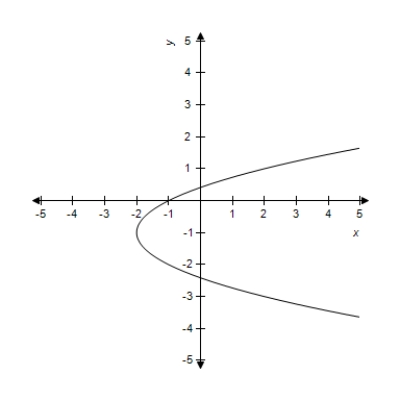 (b)
(b)
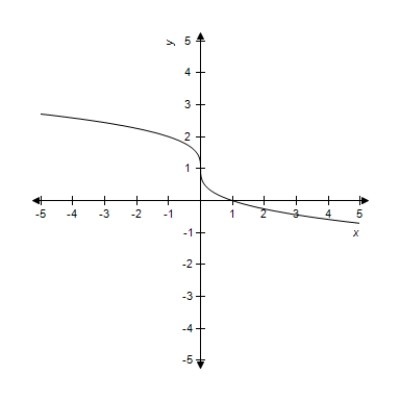
A) only (a)
B) neither (a) nor (b)
C) only (b)
D) both (a) and (b)
Correct Answer

verified
Correct Answer
verified
Multiple Choice
In a study using 50 foreign-language vocabulary words, the learning rate L (in words per minute) was found to depend on the number of words already learned x, according to the equation  . Use the intercepts to determine a window, and then use a graphing utility to graph the equation for
. Use the intercepts to determine a window, and then use a graphing utility to graph the equation for  Based on the graph, is the learning rate increasing or decreasing?
Based on the graph, is the learning rate increasing or decreasing?
A) increasing
B) decreasing
Correct Answer

verified
Correct Answer
verified
Multiple Choice
The graphs of the two equations below are shown. The lines representing these equations may be the same, may intersect once, or may be parallel. Decide whether the system of equations in the problem has one solution, no solution, or an infinite number of solutions.  and
and 
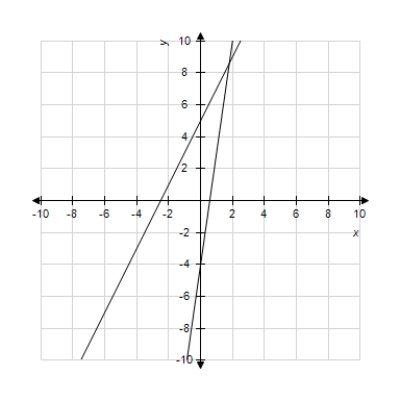
A) one solution
B) no solution
C) infinite solutions
Correct Answer

verified
Correct Answer
verified
Multiple Choice
A nut wholesaler sells a mix of cashews and peanuts. He charges $2.80 per pound for cashews and $5.30 per pound for peanuts. If the mix is to sell for $3.3 per pound, how many pounds each of peanuts and cashews should be used to make 100 pounds of the mix?
A) The wholesaler should mix 13.4 pounds of peanuts with 61 pounds of cashews.
B) The wholesaler should mix 14 pounds of peanuts with 73.4 pounds of cashews.
C) The wholesaler should mix 26.6 pounds of peanuts with 86 pounds of cashews.
D) The wholesaler should mix 39 pounds of peanuts with 86.6 pounds of cashews.
E) The wholesaler should mix 20 pounds of peanuts with 80 pounds of cashews.
Correct Answer

verified
Correct Answer
verified
Multiple Choice
Graph the function below and experiment with the viewing window to obtain a complete graph, adjusting the ranges where necessary. Does the figure below show the complete graph?

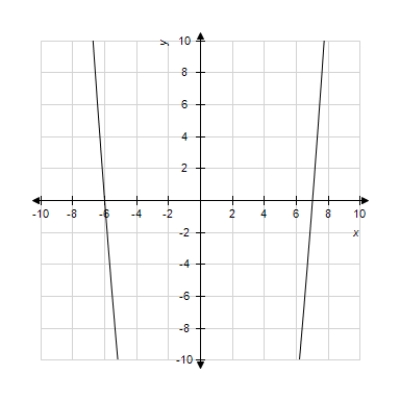
A) Yes
B) No
Correct Answer

verified
Correct Answer
verified
Multiple Choice
The figure below show the demand and supply functions for a product. Decide which line shows the supply function and which line the demand function. 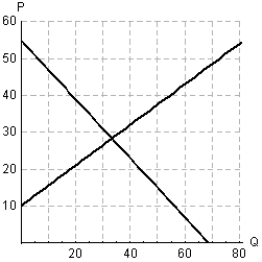
Will a price above the equilibrium price result in a market surplus or shortage?
Will a price above the equilibrium price result in a market surplus or shortage?
A) shortage
B) surplus
Correct Answer

verified
Correct Answer
verified
Multiple Choice
Graph the function using a window that gives a complete graph. What does y approach as x gets large? 
A) 0
B) -10
C) 1
D) 10
E) 5
Correct Answer

verified
Correct Answer
verified
Multiple Choice
Solve the inequality and choose the graph of the solution. 
A) ![]()
B) ![]()
C) ![]()
D) ![]()
E) ![]()
Correct Answer

verified
Correct Answer
verified
Multiple Choice
If a line is vertical, then its slope is undefined.
A) True
B) False
Correct Answer

verified
Correct Answer
verified
Multiple Choice
Solve the system of equations by substitution. 
A) (-10,-21)
B) (5,-10)
C) (9,-21)
D) (5,9)
E) (-21,5)
Correct Answer

verified
Correct Answer
verified
Multiple Choice
Find the slope m and y-intercept b of the line whose equation is given below.
X = - 
A) m = - ![]()
, b = 0
B) m = 0, b = 0
C) m = - ![]()
, b = ![]()
D) m = 0, b = - ![]()
E) Both m and b are undefined.
Correct Answer

verified
Correct Answer
verified
Multiple Choice
The graph of  is shown in the figure below.
is shown in the figure below.
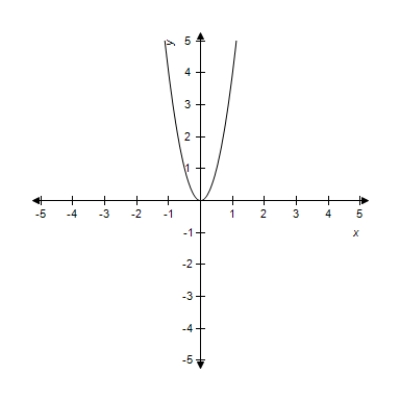
Does the point (0,1) lie on the graph? In other words, do the coordinates satisfy the equation?
Does the point (0,1) lie on the graph? In other words, do the coordinates satisfy the equation?
A) Yes
B) No
Correct Answer

verified
Correct Answer
verified
Multiple Choice
Suppose a calculator manufacturer has the total cost function  and the total revenue function
and the total revenue function  , where x represents the number of calculators sold. What is the equation of the profit function,
, where x represents the number of calculators sold. What is the equation of the profit function,  , for the calculator manufacturer?
, for the calculator manufacturer?
A) ![]()
B) ![]()
C) ![]()
D) ![]()
E) ![]()
Correct Answer

verified
Correct Answer
verified
Multiple Choice
A bank lent $108,500 to a company for the development of two products. If the loan for product A was for $33,500 more than that for product B, how much was lent for each product?
A) ![]()
B) ![]()
C) ![]()
D) ![]()
E) ![]()
Correct Answer

verified
Correct Answer
verified
Multiple Choice
A linear cost function is  , where x represents the number of units produced. What is the cost of producing one more item if 150 are currently being produced? Round your answer to the nearest cent.
, where x represents the number of units produced. What is the cost of producing one more item if 150 are currently being produced? Round your answer to the nearest cent.
A) $9,766.18
B) $29.18
C) $5,360.00
D) $5,389.18
E) $150.00
Correct Answer

verified
Correct Answer
verified
Multiple Choice
Solve the system by elimination, or by any convenient method. 
A) ![]()
And ![]()
B) ![]()
And ![]()
C) ![]()
And ![]()
D) There are infinitely many solutions.
E) There is no solution.
Correct Answer

verified
Correct Answer
verified
Multiple Choice
Solve the equation. 
A) ![]()
B) ![]()
C) 14
D) 0
E) 4
Correct Answer

verified
Correct Answer
verified
Multiple Choice
Approximate the zeros of the function below by approximating the x-intercepts with a graphing utility. Round your answer to four decimal places 
A) ![]()
B) ![]()
C) ![]()
D) ![]()
E) ![]()
Correct Answer

verified
Correct Answer
verified
Showing 221 - 240 of 243
Related Exams